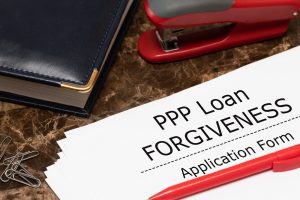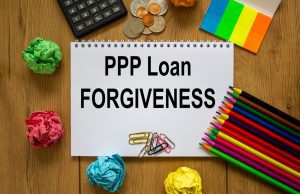
The Paycheck Protection Program (PPP) was a crucial lifeline for many small businesses during the pandemic, offering loans that could be forgiven if used for specific purposes like payroll, rent, or utilities. However, the process of PPP loan forgiveness has proven to be challenging for some, as many businesses are encountering issues with their lender’s handling of the forgiveness application. While the program provided much-needed relief, navigating the forgiveness process hasn’t been smooth for everyone.
In this blog, we’ll explore common issues borrowers face with lenders during the PPP loan forgiveness process and provide actionable steps to resolve them. At G&S Accountancy, we are here to guide you through every step to ensure your business successfully navigates any roadblocks.

Some lenders are slow to process forgiveness applications, often exceeding the SBA’s required 60-day timeline to make a decision. This delay can leave businesses in limbo, uncertain about their financial obligations.
Errors in the lender’s system, such as misreported loan amounts or incorrect documentation, can result in delays or incorrect submissions to the SBA, further complicating the forgiveness process.
In some cases, borrowers are left in the dark, with lenders failing to provide clear communication about their application status or next steps. This can make it difficult for business owners to know how to address issues or gather missing documentation.
Applications may be rejected or delayed due to missing or incomplete documentation. For example, payroll records or expense reports that don’t align with the lender’s requirements can trigger an application rejection.
If you’re facing challenges with your lender’s forgiveness application process, here are some steps you can take to resolve the problem:
Start by reaching out to your lender and requesting a detailed explanation of the issue. Find out what’s missing or why your application was delayed or denied. This step is crucial in identifying how to move forward and whether any documentation needs to be resubmitted.
Once the issue has been identified, address any missing information or errors. Ensure that all required documents—such as payroll records, tax forms, and expense reports—are complete and accurate. Resubmit your corrected application to the lender.
If your lender is unresponsive, or you’re unable to resolve the issue directly, escalate the matter to the SBA. The SBA can step in and review cases where the lender is not processing forgiveness applications properly or timely. This can be done through your local SBA office or by contacting the SBA directly.
If your lender denies forgiveness and you believe it was done in error, you can file an appeal with the SBA’s Office of Hearings and Appeals (OHA). Filing an appeal extends your deferment period, giving you more time before loan payments are due. Make sure to file your appeal within 30 days of receiving the denial.

To ensure a smooth process, having the right documentation is essential:
At G&S Accountancy, we have experience helping businesses navigate the complexities of PPP loan forgiveness. Here’s how we can assist you:
Issues with your PPP loan forgiveness application can be stressful, but they don’t have to be the end of the road. By taking proactive steps, working closely with your lender, and escalating matters when necessary, you can resolve these issues and secure the loan forgiveness your business deserves. At G&S Accountancy, we’re here to help every step of the way, whether you’re a non-profit organization navigating specific financial challenges or a small retail business needing guidance through the forgiveness process. With expertise across various industries, our team ensures that your business can confidently approach PPP loan forgiveness and move forward with a strong financial foundation.
Contact us today for professional assistance in navigating your PPP loan forgiveness challenges. Let’s work together to get your business back on track.
To qualify for forgiveness, a business must use at least 60% of the PPP loan funds on payroll expenses. The remaining 40% can be allocated to eligible non-payroll costs such as rent, utilities, and mortgage interest. Additionally, maintaining employee headcount and wages is crucial to maximize forgiveness.
The covered period is either 8 to 24 weeks from the date of loan disbursement. You can choose a period that best aligns with your payroll schedule and business needs. Carefully selecting the covered period can significantly impact the amount eligible for forgiveness.
Required documents typically include payroll tax filings, bank account statements, lease agreements, mortgage statements, and utility bills. Keeping accurate and thorough records is essential for the application process and to ensure expenses meet SBA requirements.
Forgiveness may be denied or reduced due to improper use of funds, lack of required documentation, failure to maintain employee headcount or salaries, or exceeding the allowable percentage of non-payroll costs. Reviewing guidelines and ensuring compliance can help prevent issues.
After submitting the forgiveness application, lenders have 60 days to review and submit their decision to the SBA. The SBA then has up to 90 days to complete the process. In total, it may take several months to receive a final decision, depending on the lender and SBA workload.
We will happily offer you a free consultation to determine how we can best serve you.
Contact Us Today